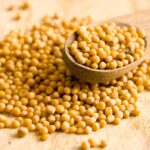Yeast infections on the skin can be a frustrating and uncomfortable experience. While conventional treatments may provide relief, many people are opting for natural remedies to address the root cause of the problem. In this comprehensive article, we’ll explore the best natural remedies for yeast infection on the skin, their effectiveness, and how to incorporate them into your healthcare routine.
Best Natural Remedies for Yeast Infection on Skin
- Tea Tree Oil:
Tea tree oil is a potent antifungal and antimicrobial agent that can be highly effective in treating yeast infections on the skin. Its active compounds, such as terpinen-4-ol, have been shown to inhibit the growth of Candida, the fungus responsible for yeast infections. To use tea tree oil, dilute it with a carrier oil (such as coconut or jojoba oil) and apply it directly to the affected area. You can also add a few drops to a warm bath for a soothing and therapeutic soak. - Garlic:
Garlic is a natural powerhouse when it comes to fighting yeast infections. It contains allicin, a compound with strong antifungal properties that can help combat the Candida fungus. To use garlic for yeast infections, you can crush a fresh clove and apply it directly to the affected area. Alternatively, you can take garlic supplements, which are also effective in treating and preventing yeast infections. - Probiotics:
Maintaining a healthy balance of gut flora is crucial for preventing and treating yeast infections. Probiotics, such as Lactobacillus acidophilus and Bifidobacterium, can help restore the natural balance of beneficial bacteria in the body, thereby reducing the overgrowth of Candida. You can incorporate probiotic-rich foods, such as yogurt, kefir, and fermented vegetables, into your diet or take probiotic supplements. - Apple Cider Vinegar:
Apple cider vinegar is a versatile natural remedy with antifungal properties that can help combat yeast infections on the skin. The acetic acid in apple cider vinegar can create an unfavorable environment for the Candida fungus, inhibiting its growth. You can dilute apple cider vinegar with water and apply it directly to the affected area, or add it to a warm bath for a soothing soak. - Coconut Oil:
Coconut oil is another effective natural remedy for yeast infections on the skin. It contains lauric acid and caprylic acid, both of which have potent antifungal properties. Coconut oil can be applied directly to the affected area or used as a carrier oil for essential oils like tea tree oil. Its soothing and moisturizing properties can also help alleviate the discomfort associated with yeast infections. - Aloe Vera:
Aloe vera is a natural anti-inflammatory and soothing agent that can provide relief for yeast infections on the skin. The cooling and healing properties of aloe vera can help reduce redness, itching, and irritation caused by the infection. Simply cut a fresh aloe vera leaf and apply the gel directly to the affected area. - Oregano Oil:
Oregano oil is a powerful natural remedy for yeast infections due to its high concentration of carvacrol and thymol, two compounds with strong antifungal and antimicrobial properties. Dilute oregano oil with a carrier oil before applying it to the affected area, or take oregano oil supplements to address the infection from the inside out. - Boric Acid:
Boric acid is a natural compound that has been used for centuries to treat various fungal and bacterial infections, including yeast infections on the skin. When applied topically, boric acid can help create an unfavorable environment for the Candida fungus, effectively reducing the infection. However, it’s essential to use boric acid with caution and consult with a healthcare professional before using it. - Turmeric:
Turmeric is a spice with remarkable anti-inflammatory and antimicrobial properties that can be beneficial for yeast infections on the skin. The active compound in turmeric, curcumin, has been shown to inhibit the growth of Candida. You can add turmeric to your meals, or create a paste by mixing it with water or a carrier oil and applying it directly to the affected area. - Cranberry:
Cranberries contain proanthocyanidins, compounds that can inhibit the adhesion of Candida to the skin, preventing the growth and spread of the infection. Drinking cranberry juice or taking cranberry supplements can help support the body’s natural defenses against yeast infections.
Conclusion:
Yeast infections on the skin can be a frustrating and persistent problem, but there are numerous natural remedies that can provide effective relief. By incorporating these best natural remedies for yeast infection on the skin into your healthcare routine, you can address the root cause of the issue, alleviate symptoms, and promote overall skin health. Remember to always consult with a healthcare professional, especially if the infection persists or worsens. Embrace the power of nature and take control of your skin’s well-being.




